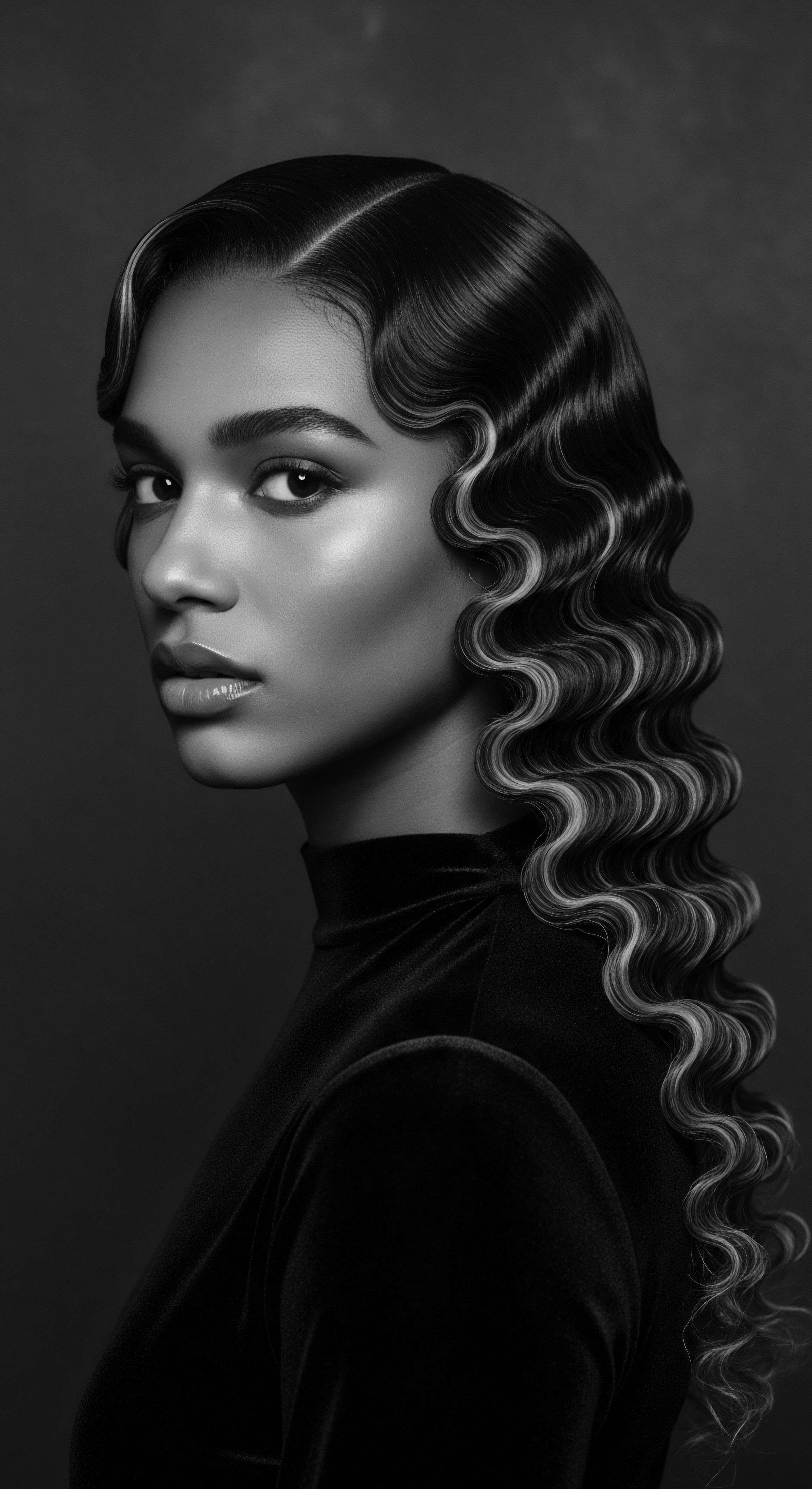
Fundamentals
The concept of Civil Rights, at its most fundamental level, denotes the protections and privileges of personal liberty guaranteed to all individuals by law. These are the foundational assurances that allow one to participate fully in society without undue interference or discrimination. Within the grand tapestry of human existence, these rights are not merely abstract ideals; they represent tangible safeguards against oppression, ensuring fairness and equal treatment under the governing structures of a collective. The meaning of Civil Rights extends beyond simple legal clauses, encompassing the very breath of personal autonomy and the ability to exist with dignity.
From the vantage point of Roothea’s ‘living library,’ Civil Rights assumes a particular resonance when viewed through the lens of textured hair heritage. Here, the explanation of Civil Rights becomes an account of how the freedom to wear one’s hair in its natural, ancestral forms is intrinsically linked to the broader struggle for human recognition and equity. It is a declaration that the coils, kinks, and waves that spring from the scalp are not merely biological attributes but profound expressions of identity, history, and cultural belonging.

The Hair as a Site of Identity
The very strands upon our heads carry ancestral memory, a genetic blueprint connecting us to generations past. For communities of Black and mixed-race heritage, hair has long served as a profound marker of identity, conveying information about age, marital status, social rank, and even spiritual beliefs in pre-colonial African societies. (Afriklens, 2024). The way hair was styled, adorned, and cared for was a communal act, strengthening familial bonds and reflecting a collective spirit (Thrifts & Tangles, 2021).
This deeply personal and communal connection to hair meant that its regulation or suppression became a direct assault on one’s very being and cultural continuity. The denial of the right to wear one’s hair naturally, or the imposition of foreign beauty standards, became a tool of subjugation, a means of stripping away selfhood and cultural pride. The struggle for Civil Rights, therefore, for textured hair communities, often manifests as a demand for the freedom to simply exist authentically, crown and all.
Civil Rights, viewed through the heritage of textured hair, represents the fundamental freedom to embody one’s ancestral identity without fear of prejudice or penalty.

Early Understandings of Personal Liberty
Historically, the interpretation of personal liberty has been selective, often excluding marginalized groups. The initial delineation of rights frequently overlooked the unique experiences of those whose physical attributes, such as hair texture, were deemed “other” or “unacceptable” by dominant societal norms. This created a profound disconnect between the espoused ideals of freedom and the lived realities of many.
In the journey toward universal recognition of Civil Rights, the specific battles fought over hair reveal the pervasive nature of systemic discrimination. It highlights how seemingly superficial aspects of appearance become battlegrounds for deeper assertions of humanity and self-determination. The ability to choose one’s hairstyle, to wear one’s hair as it naturally grows, is not merely a stylistic preference; it is a declaration of autonomy and a reclaiming of ancestral beauty.
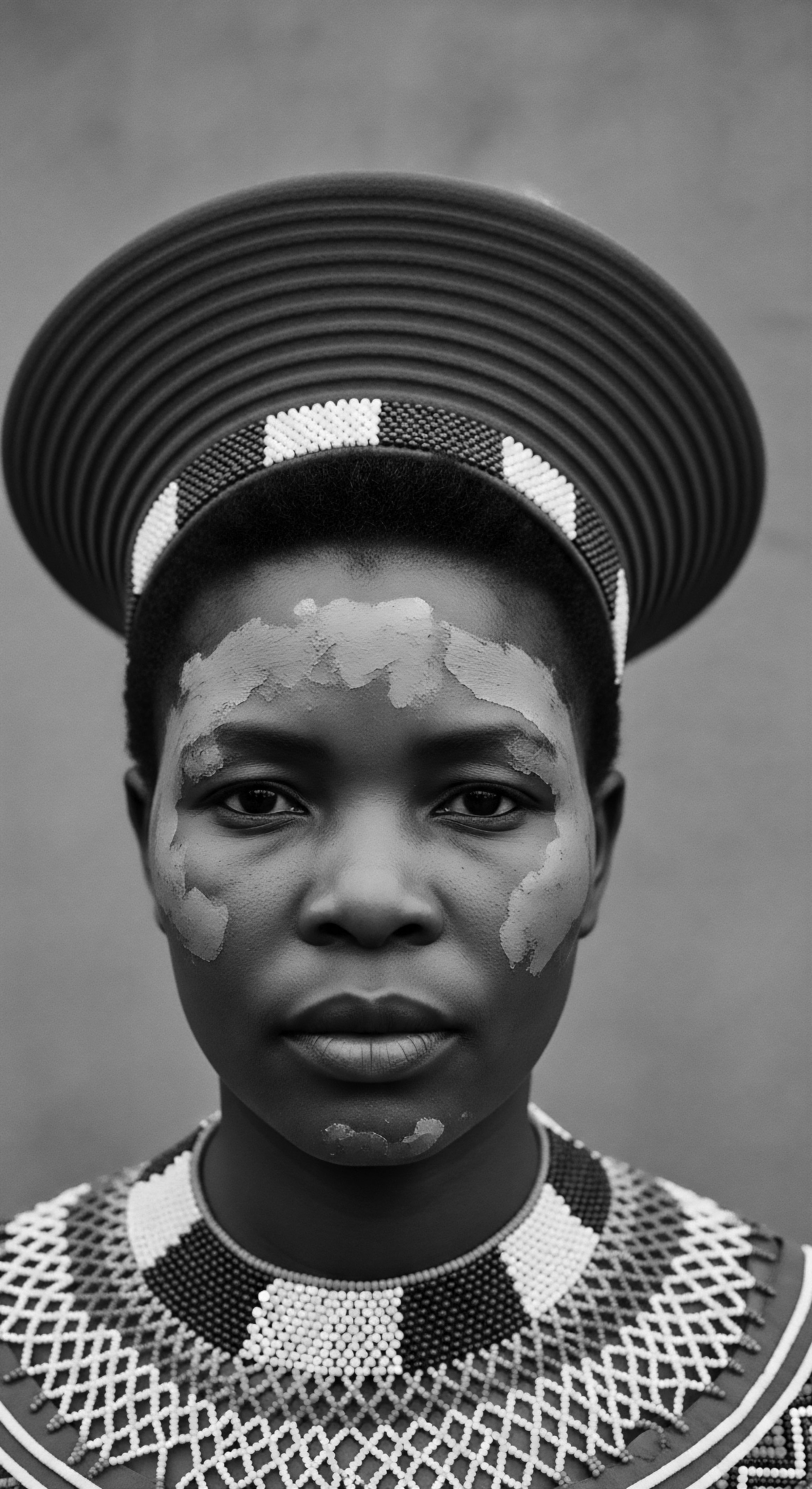
Intermediate
Moving beyond the foundational comprehension, the intermediate meaning of Civil Rights reveals a more intricate understanding of how societal structures have historically constrained and liberated expressions of identity, particularly concerning textured hair. This section unpacks the historical evolution of hair as a site of oppression and, subsequently, a powerful symbol of resistance and cultural reclamation. The journey from elemental biology to an assertion of identity through hair has been long and fraught, yet it is a testament to enduring spirit.
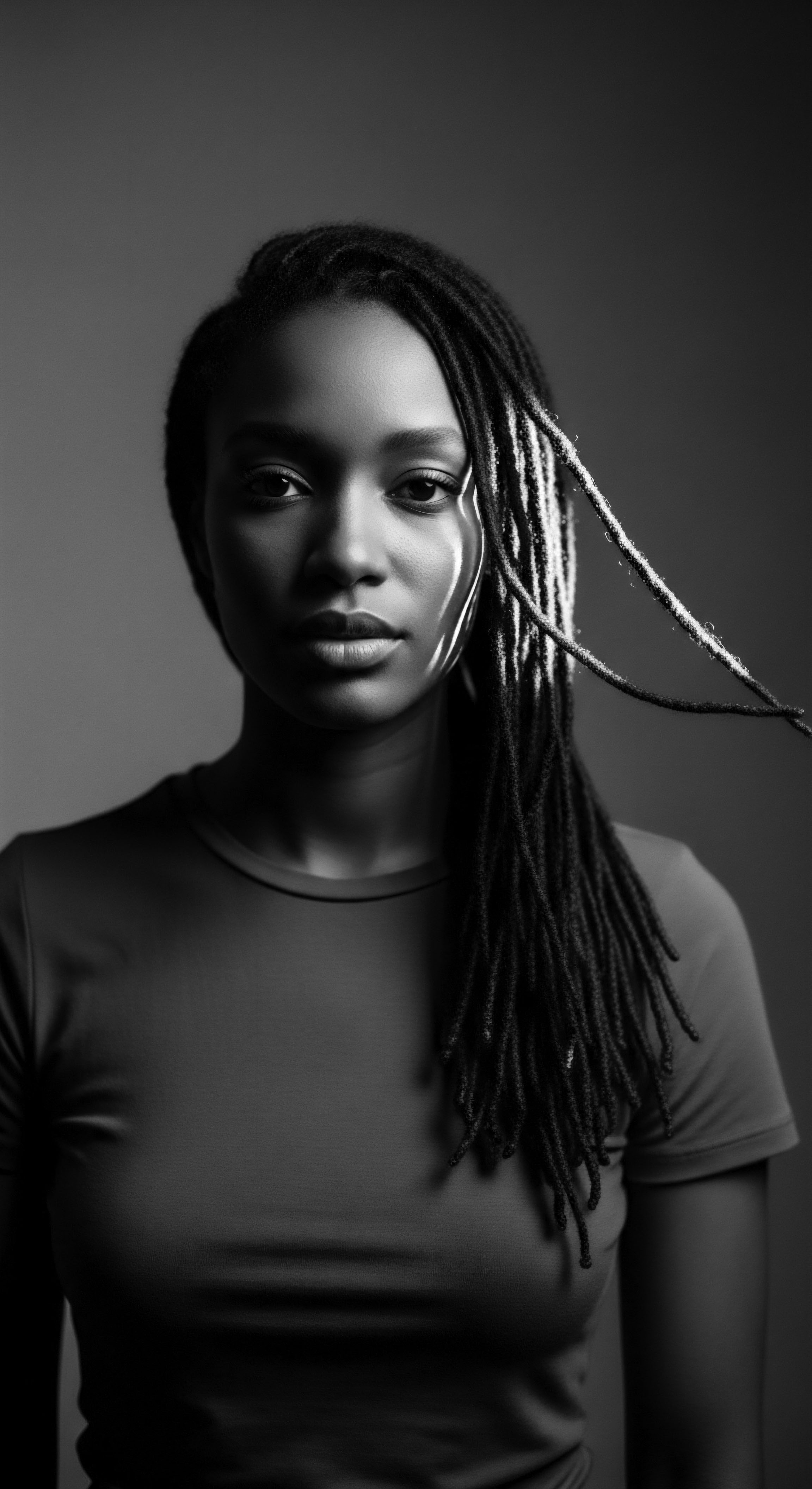
The Imposition of Conformity
During periods of enslavement and colonization, one of the most dehumanizing acts inflicted upon African peoples was the forced shaving of heads upon arrival in the Americas. This act served to sever ancestral ties, erase cultural markers, and strip individuals of their identity, reducing them to mere commodities (Afriklens, 2024), (Thrifts & Tangles, 2021). Following this initial trauma, Eurocentric beauty standards were rigorously imposed, promoting straight hair and lighter skin as the ideals of beauty and professionalism (Essence, 2020), (Wikipedia, 2020). This created an environment where altering one’s natural hair texture, often through damaging chemical relaxers and hot combs, became a perceived necessity for social acceptance and economic mobility (Thrifts & Tangles, 2021), (Consumer Notice).
The historical record is replete with instances where hair became a direct target of discriminatory policies. One compelling example is the Tignon Laws of 1786 in Louisiana. These laws mandated that free Black women cover their hair with a headwrap, or tignon, in public. The intent was to visually mark them as inferior to white women and to curb the perceived threat of their beauty and elaborate hairstyles, which were attracting white male attention (New York Historical, 2021), (Essence, 2020), (Reddit, 2024).
Yet, in a remarkable act of defiance, these women transformed the tignon into a vibrant, ornate fashion statement, adorned with luxurious fabrics, ribbons, and jewels, thereby reclaiming it as a symbol of their enduring beauty, wealth, and cultural pride (New York Historical, 2021), (Essence, 2020). This historical instance serves as a poignant reminder of the ingenuity and resilience inherent in the spirit of those who refuse to be confined.
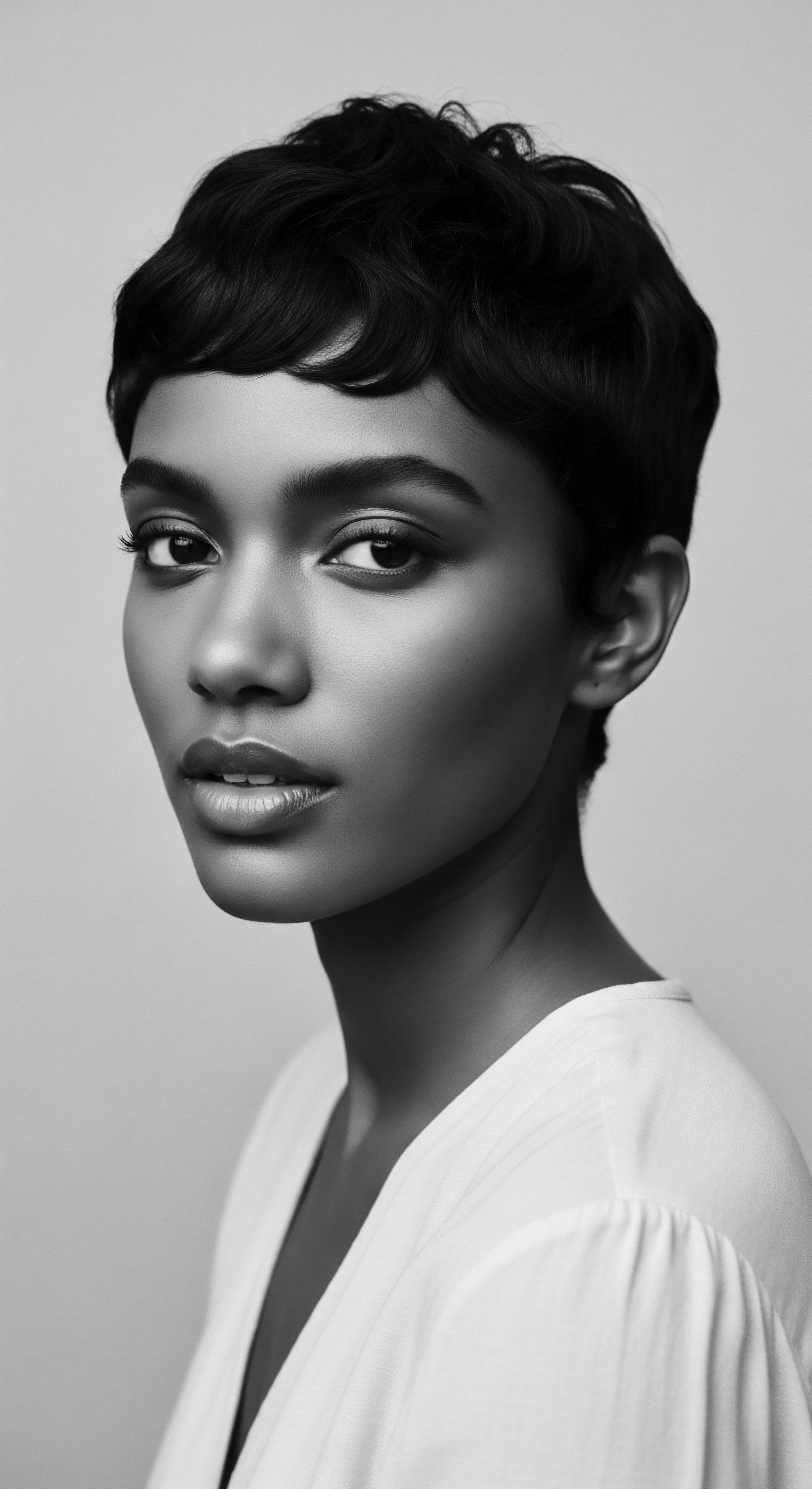
Hair as a Symbol of Resistance
The mid-20th century witnessed a powerful resurgence of natural hair as a symbol of racial pride and political consciousness, coinciding with the Civil Rights Movement. The “Black Is Beautiful” movement of the 1960s encouraged Black individuals to appreciate their natural features, including their hair, as admirable and authentic (JSTOR Daily, 2019), (Essence, 2020). The Afro, in particular, emerged as a potent emblem of Black power, self-love, and solidarity (JSTOR Daily, 2019), (Essence, 2020), (Colorful Black, 2021). Activists like Angela Davis sported the Afro as a public declaration of rebellion against Eurocentric beauty standards (JSTOR Daily, 2019).
This period also saw the popularization of traditional styles like braids and cornrows, styles that had been carried through generations as a connection to African heritage and, at times, even used as a means of communication or mapping escape routes during enslavement (Afriklens, 2024), (Thrifts & Tangles, 2021). The choice to wear these styles was not merely a fashion statement; it was a profound act of self-determination, a visible rejection of imposed norms, and an affirmation of ancestral lineage (Afriklens, 2024).
The historical policing of textured hair illuminates Civil Rights as a continuous assertion of bodily autonomy and cultural expression against enforced assimilation.
The societal perception of textured hair began to shift, slowly, from a marker of inferiority to a celebrated aspect of identity. However, this shift was not without its challenges. Even as the Civil Rights Act of 1964 prohibited employment discrimination based on race, it did not explicitly protect against discrimination based on phenotypical markers like hair texture, creating a loophole for continued prejudice (Economic Policy Institute, 2023).
The table below offers a comparison of how perceptions and legal standings of textured hair have evolved, demonstrating the ongoing nature of the Civil Rights struggle in this domain.
| Historical Period (Pre-1960s) Hair Perception ❉ Often deemed "unprofessional," "unruly," or "undesirable" by dominant Eurocentric standards. (Essence, 2020) |
| Civil Rights Era & Beyond (Post-1960s) Hair Perception ❉ Reclaimed as a symbol of pride, power, and cultural heritage, though discrimination persists. (JSTOR Daily, 2019) |
| Historical Period (Pre-1960s) Styling Practices ❉ Pressure to chemically straighten or alter natural texture for social acceptance. (Thrifts & Tangles, 2021) |
| Civil Rights Era & Beyond (Post-1960s) Styling Practices ❉ Embracing natural Afros, braids, locs, and twists as expressions of identity. (Afriklens, 2024) |
| Historical Period (Pre-1960s) Legal Context ❉ No explicit protections against hair discrimination; laws like Tignon Laws enforced hair covering. (New York Historical, 2021) |
| Civil Rights Era & Beyond (Post-1960s) Legal Context ❉ Civil Rights Act of 1964 offered general race protections, but specific hair discrimination cases emerged later. (JSTOR Daily, 2019) |
| Historical Period (Pre-1960s) This progression highlights a journey from enforced conformity to a growing assertion of the right to natural hair expression as a fundamental aspect of Civil Rights. |

Academic
The academic delineation of Civil Rights, particularly through the prism of textured hair heritage, extends beyond mere legal definitions to encompass profound sociological, psychological, and anthropological dimensions. It is an understanding that recognizes the hair on one’s head as a complex locus where elemental biology meets ancient practices, where living traditions of care intertwine with community, and where identity finds its voice in shaping futures. This perspective views Civil Rights not solely as legislative achievements but as a continuous, lived experience of asserting selfhood against historical and contemporary forces of suppression.
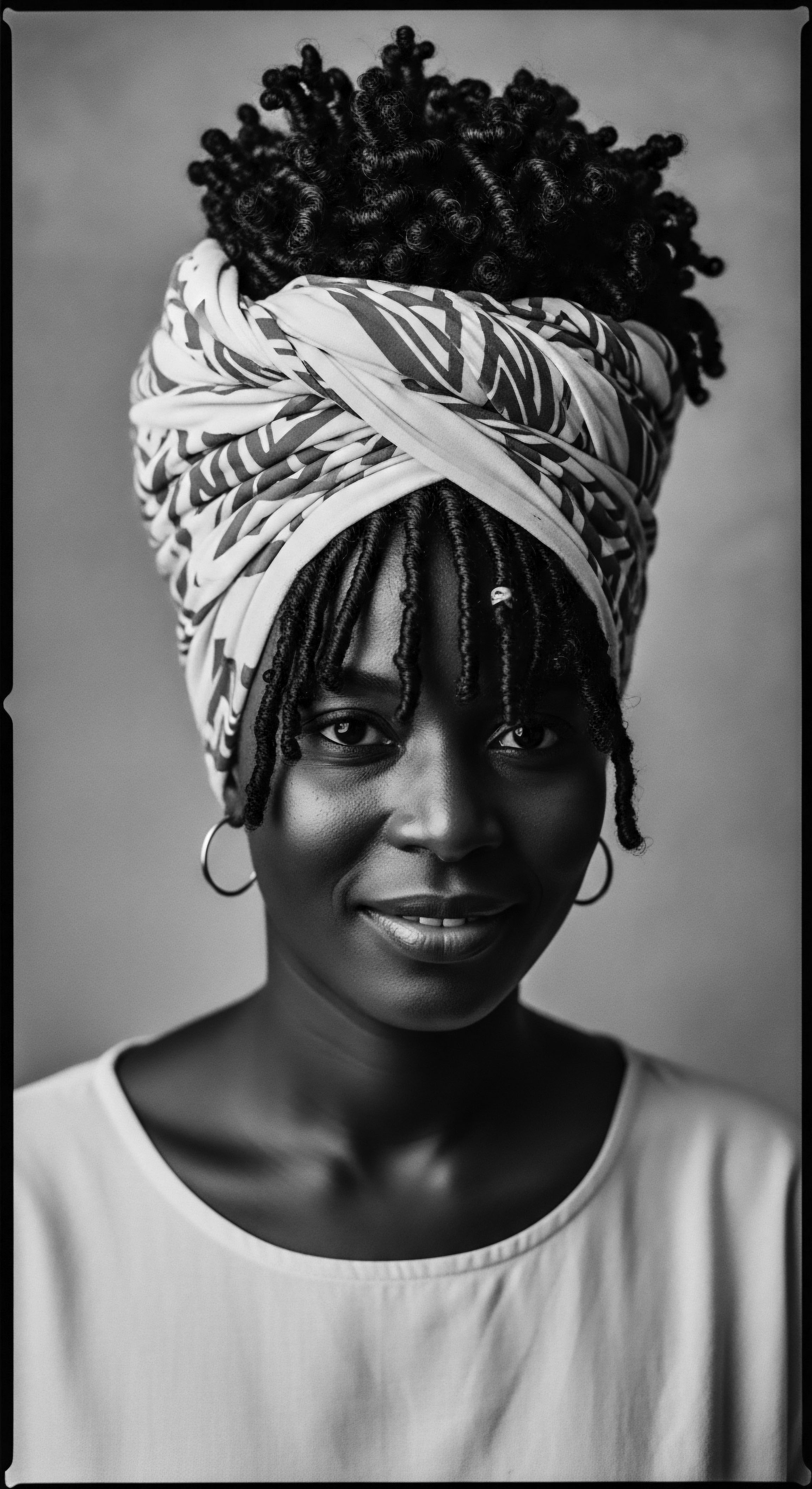
The Biopolitics of Hair ❉ A Deeper Examination
At its core, Civil Rights in this context signifies the affirmation of one’s inherent being, including the physical attributes that are inextricably linked to ancestral lineage. The biology of textured hair, with its unique curl patterns, density, and moisture needs, is a direct inheritance, an echo from the source. Yet, this natural biological variation has been historically politicized, becoming a tool for racial stratification and control.
The concept of “good hair” versus “bad hair,” a pervasive ideology rooted in the era of enslavement, directly correlated hair texture with social status and perceived worth, influencing how enslaved individuals were treated (USC StorySpace Students, 2023). This deeply embedded prejudice illustrates how biological differences were weaponized to construct and maintain hierarchies.
Scholarly inquiries into the biopolitics of hair reveal that policies targeting natural hairstyles are not benign or race-neutral; they are often extensions of anti-Blackness, aiming to preserve white-dominated spaces and enforce assimilation (AAIHS, 2021). The devaluation and denigration of Black hair have significant psychological ramifications, contributing to internalized racism, negative self-image, anxiety, and chronic stress in academic and professional settings (PMC, 2023), (Research, 2025). This emotional toll is compounded by microaggressions and the constant pressure to conform, leading some individuals to feel compelled to alter their natural hair, a process that can cause physical damage and further mental distress (Bounce Black).
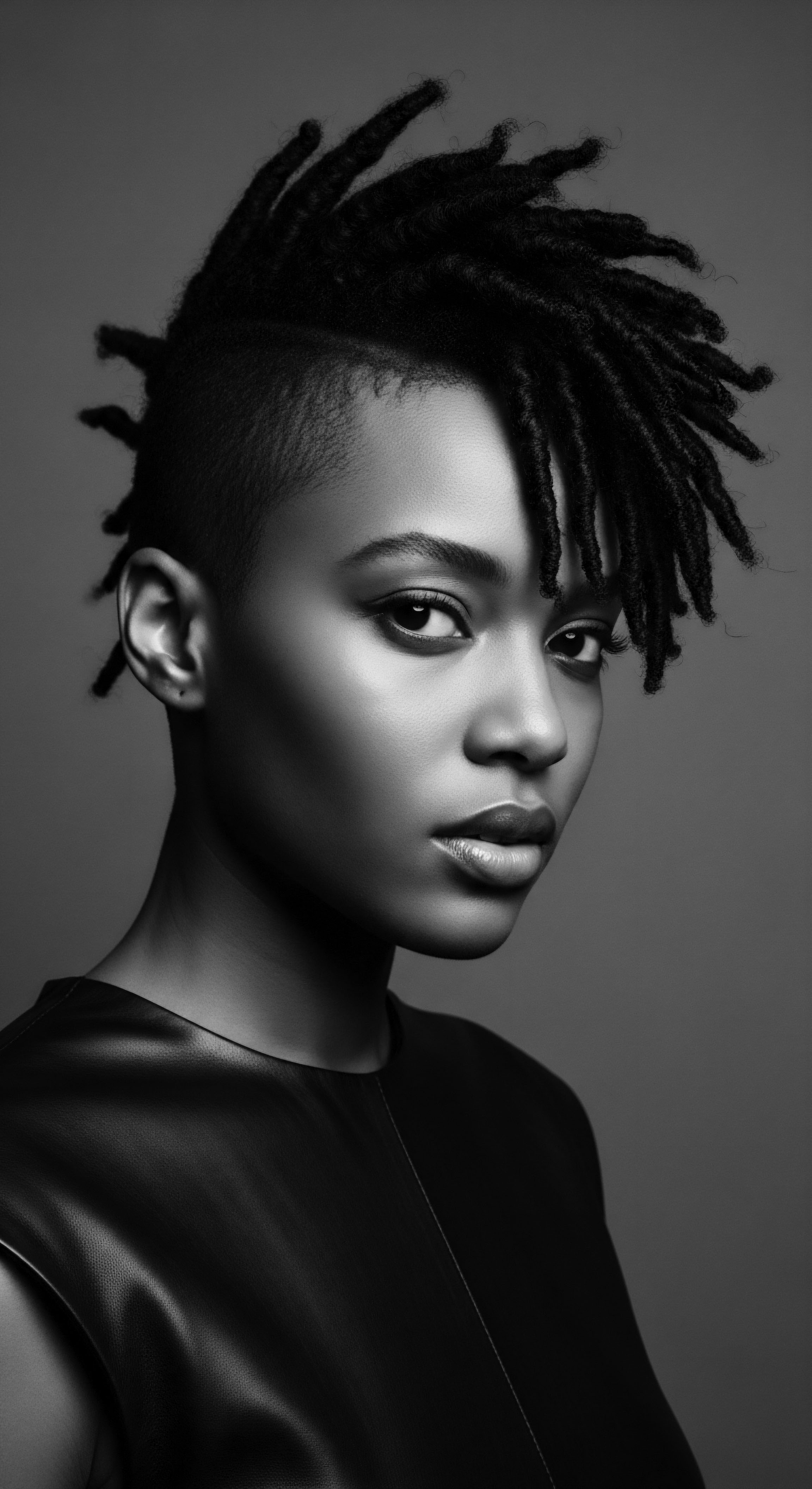
Ancestral Wisdom and the Tender Thread of Care
Before the intrusion of colonial powers, African societies held hair in high esteem, imbuing it with spiritual, social, and cultural significance (Afriklens, 2024), (Afriklens, 2024). Hair was considered sacred, often seen as the highest point of the body, a conduit for spiritual energy and a connection to ancestors (Afriklens, 2024), (Know Your Hairitage). Hairdressing was a communal activity, a tender thread weaving together families and communities, where skills and traditions were passed down through generations (Thrifts & Tangles, 2021), (Know Your Hairitage).
These ancient practices, such as intricate braiding patterns, were not merely aesthetic choices; they conveyed complex social codes, indicating marital status, age, wealth, and tribal affiliation (Afriklens, 2024), (Odele Beauty, 2021). The resilience of these practices, surviving the brutal Middle Passage and generations of systemic oppression, speaks to their profound meaning. The very act of maintaining these traditions, even in secret, became a quiet act of Civil Rights, a preservation of self and cultural memory.
For example, historical accounts indicate that during enslavement, cornrows were ingeniously used to create maps for escape routes, with seeds sometimes braided into the hair to sustain those seeking freedom (Afriklens, 2024), (Thrifts & Tangles, 2021). This specific historical example powerfully illuminates the Civil Rights’ connection to textured hair heritage, showcasing hair as a tool of survival and liberation, not just a physical attribute. This profound act of coded communication, hidden in plain sight, underscores the deep ingenuity and resistance embedded within ancestral hair practices.
The understanding of Civil Rights in this context acknowledges the historical and ongoing fight for the right to wear and care for textured hair in ways that honor these deep ancestral practices, free from judgment or penalty. It is a demand for the recognition of inherited beauty and the wisdom of traditional care rituals.
- Protective Styles ❉ Styles such as braids, locs, and twists, deeply rooted in African traditions, serve not only as aesthetic expressions but also protect the hair from environmental damage and excessive manipulation, preserving its health and integrity (Bounce Black).
- Communal Grooming ❉ The practice of styling hair as a shared activity, often involving family and community members, reinforces social bonds and transmits generational knowledge of hair care techniques and cultural meanings (Thrifts & Tangles, 2021).
- Natural Ingredients ❉ The historical use of natural oils, butters, and herbs, passed down through oral traditions, demonstrates an ancestral understanding of hair’s elemental needs, often validated by modern scientific insights into their nourishing properties.

The Unbound Helix ❉ Voicing Identity and Shaping Futures
The contemporary landscape of Civil Rights, particularly as it relates to textured hair, continues to evolve, pushing for legislative and social recognition of hair as an integral part of racial identity. The emergence of the CROWN Act (Creating a Respectful and Open World for Natural Hair) in the United States stands as a significant legislative response to persistent hair discrimination (Economic Policy Institute, 2023). This act, first passed in California in 2019, explicitly prohibits discrimination based on hair texture and protective hairstyles associated with race, such as Afros, braids, locs, and twists, in workplaces and schools (Economic Policy Institute, 2023), (Legal Defense Fund, 2024), (Wikipedia, 2022).
The CROWN Act addresses a critical gap in existing Civil Rights legislation. While the Civil Rights Act of 1964 banned race-based discrimination, it did not explicitly cover hair texture, leaving room for policies that disproportionately affected Black individuals (Economic Policy Institute, 2023). The need for such legislation is starkly illustrated by research findings ❉ a 2019 study revealed that 80% of Black women surveyed believed they had to change their natural hair to conform in professional settings, and Black women’s hair was 3.4 times more likely to be perceived as unprofessional (Crown Act, 2019), (Consumer Notice).
More recent data from 2023 indicates that Black women are 2.5 times more likely to have their hair perceived as unprofessional, and 54% are more likely to feel they must straighten their hair for a job interview to be successful (Crown Act, 2023), (TestGorilla). These statistics underscore the profound impact of hair discrimination on economic opportunities and psychological well-being.
The ongoing legal battles, such as the case of Darryl George in Texas, a high school student suspended for his locs despite the state’s CROWN Act, demonstrate that legislative victories are but one step in a longer journey toward true equity (NPR, 2024). These cases highlight the continuing struggle for the full implementation and acceptance of these protections. The meaning of Civil Rights, therefore, must also encompass the continuous advocacy and education required to dismantle ingrained biases and promote genuine inclusivity.
The CROWN Act exemplifies how Civil Rights evolve to safeguard textured hair as a fundamental expression of racial identity and cultural continuity.
The psychological impact of hair discrimination is substantial, leading to internalised racism, anxiety, and a diminished sense of belonging (Research, 2025). The very act of embracing one’s natural hair, therefore, becomes a powerful counter-narrative, a statement of self-acceptance and cultural pride that challenges Eurocentric beauty standards (Psychology Today, 2023). This reclamation of natural hair contributes to holistic well-being, affirming the profound connection between physical appearance, mental health, and cultural identity.
The pursuit of Civil Rights for textured hair is not merely about legal mandates; it is about cultivating a society where the inherent splendor of every hair strand is recognized and revered. It is about fostering an environment where individuals can connect with their ancestral story through their hair, contributing to a collective future where diverse expressions of beauty are celebrated as a testament to human richness. This continuous striving ensures that the unbound helix of textured hair can truly signify freedom, resilience, and an unbroken connection to a vibrant past, shaping a future where all crowns are honored.
The significance of the Civil Rights movement, seen through the lens of textured hair, represents a complex and ongoing dialogue about self-determination. It is about the fundamental human right to express one’s cultural identity without fear of prejudice, to thrive in spaces that historically sought to diminish or erase that identity. The fight for hair freedom is a micro-level manifestation of a macro-level struggle for racial justice, affirming that every strand carries the weight of history and the promise of liberation. This deep exploration clarifies the intrinsic link between personal appearance and collective freedom, a connection often overlooked in broader discussions of civil liberties.

Reflection on the Heritage of Civil Rights
As we close this contemplation on Civil Rights, viewed through the tender wisdom of Roothea’s ‘living library,’ we recognize an enduring truth ❉ the struggle for freedom is intimately woven into the very fibers of our being, including the coils and kinks that crown our heads. The journey of textured hair, from ancient reverence to colonial suppression, and then to a vibrant resurgence as a symbol of liberation, mirrors the broader narrative of Civil Rights itself. It is a chronicle of profound resilience, a testament to the spirit that refuses to be silenced or reshaped by external pressures.
The Civil Rights movement, in its expansive interpretation, provided a powerful framework for individuals to reclaim their authentic selves, to stand tall in the beauty of their inherited features. The echoes from the source, those ancestral practices of hair care and adornment, were not lost to time or oppression; they persisted, carried forward as whispers of wisdom and acts of quiet defiance. These tender threads of tradition became visible declarations during periods of intense social change, reminding us that the deepest acts of self-love are often profoundly political.
The unbound helix of textured hair today signifies not just a personal choice, but a living legacy. It is a continuous assertion of identity, a celebration of cultural memory, and a vibrant promise for futures where every unique expression of self is not only tolerated but cherished. The legislative strides, like the CROWN Act, represent collective affirmations of what ancestral wisdom always knew ❉ that the right to wear one’s hair as it grows is a fundamental human right, a cornerstone of dignity and belonging. Roothea’s commitment to preserving this heritage reminds us that the fight for Civil Rights is ongoing, a beautiful, necessary tending of the garden of human freedom, ensuring that every strand, every story, is honored and protected for generations to come.

References
- Afriklens. (2024, November 1). African Hairstyles ❉ Cultural Significance and Legacy.
- AAIHS. (2021, October 19). Hair Discrimination and Global Politics of Anti-Blackness, Part 1.
- Bounce Black. (n.d.). Hair and Mental Health.
- Colorful Black. (2021, June 10). The Afro ❉ quite a symbol.
- Consumer Notice. (n.d.). Hair Discrimination in the Workplace ❉ How it Affects Mental Health.
- Crown Act. (2019). 2019 Research Study for Women.
- Crown Act. (2023). 2023 Workplace Research Study.
- Economic Policy Institute. (2023, July 26). The CROWN Act ❉ A jewel for combating racial discrimination in the workplace and classroom.
- Essence. (2020, October 27). The Impact of The ‘Fro In The Civil Rights Movement.
- Essence. (2020, October 24). The Tignon Laws Set The Precedent For The Appropriation and Misconception Around Black Hair.
- JSTOR Daily. (2019, July 3). How Natural Black Hair at Work Became a Civil Rights Issue.
- Know Your Hairitage. (n.d.). African Culture.
- Legal Defense Fund. (2024, March 27). Civil Rights Organizations Follow State Court Ruling with a Letter to Texas School Leaders Warning About Race-Based Hair Discrimination.
- NPR. (2024, August 7). Judge rules against majority of claims in Black student’s hair discrimination case.
- New York Historical. (2021). Fashionable Rebellion – Women & the American Story.
- Odele Beauty. (2021, February 22). 6 Things Everyone Should Know About Black Hair History.
- PMC. (2023, August 2). The Person Beneath the Hair ❉ Hair Discrimination, Health, and Well-Being.
- Psychology Today. (2023, December 12). The Politics of Black Hair.
- Reddit. (2024, March 9). The Historical Significance of Black Women Hair Standards.
- Research. (2025, May 15). Beyond the roots ❉ exploring the link between black hair and mental health.
- TestGorilla. (n.d.). How hair bias affects Black women in the workplace.
- Thrifts & Tangles. (2021, December 16). The Evolution of Black Hair for Beauty & Resistance.
- USC StorySpace Students. (2023). The Politics of Black Hair.
- Wikipedia. (2022, June 23). Discrimination based on hair texture in the United States.
